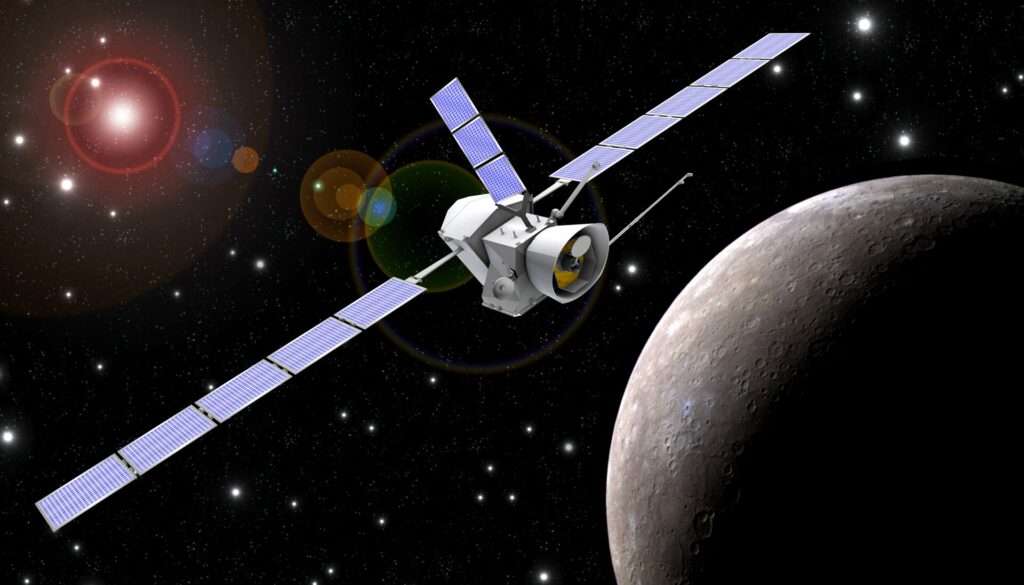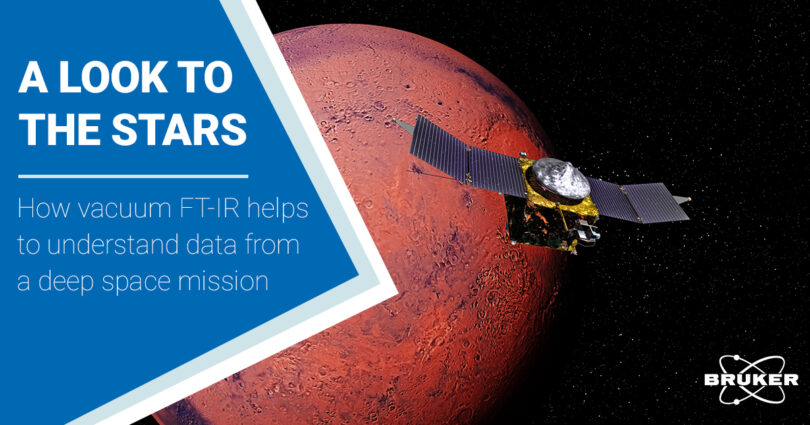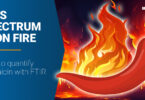How FT-IR helps to understand data from a deep space mission
Many of you may remember the exciting moment almost 20 years ago, when NASA launched MESSENGER (the MErcury Surface, Space ENvironment, GEochemistry and Ranging) to study characteristics and environment (mainly chemical composition) of Mercury from orbit, the smallest and least explored planet in our solar system. MESSENGER has many science instruments mounted, such as MASCS, consisting of a UV/VIS and a VIS/IR spectrometer, optimized to observe weak atmospheric emissions and surface reflectance in the 0.3-1.45 µm band (33,000 – 6,900 cm-1).
MESSENGER’s XRD data indicated a volcanic surface with high abundances of Mg and Ca (presumably as Sulfides). Due to Mercury’s high dayside temperatures, there is only limited spectral reflectance data of sulfides available (from the night side). To get a better idea what to expect, the Planetary Emissivity Laboratory (PEL), a special sub-group of the Planetary Spectroscopy Laboratory (PSL) of the DLR in Berlin, Germany, experimentally created spectral reflectance data in VIS and NIR regions of fresh and heated samples of MnS, CaS and MgS. These spectra have been used for interpretation of spectra from the MESSENGER mission [1]. The predicted spectral features helped locating sulfide deposits on Mercury and identifying the material in which the characteristic Mercury hollows form.
The spectral reflectance data in PSL has been obtained using a high-end Bruker VERTEX 80v vacuum FT-IR spectrometer, allowing to measure emissivity, bidirectional reflectance and transmittance of various types of planetary materials over a wide spectral range from UV to FIR (50,000 cm-1 to 5 cm-1), at high temperatures, and – very important – under vacuum. In other words, VERTEX 80v enables to measure the analogue samples by mimicking the natural Mercury environment. With VERTEX 80v’s fully evacuated optics bench, resulting spectra will be free from lab air disturbances. Dedicated sample holders and cells allow for reflectance under a broad angle range, for accurate transmittance via collimated beam or, if required, also for analysis in air or inert gas atmosphere.
In 2018, the European Space Agency (ESA) and the Japan Aerospace Exploration Agency (JAXA) started the BepiColombo mission (named after Italian mathematician and engineer Prof. Giuseppe Bepi Colombo) to Mercury to study its composition, geophysics, atmosphere, magnetosphere and history. After a seven-year journey, it will arrive in late 2025 to gather data during its one-year nominal mission. MERTIS (MErcury Radiometer and Thermal Infrared Spectrometer) mounted on BepiColombo is an imaging spectrometer and will obtain hyper-spectral data in the mid IR range 7-14 µm (1,400 – 700 cm-1) to determine the mineralogical composition of Mercury’s surface. The interpretation of these emissivity spectra requires a wide database of analogue materials. PEL has been collecting emissivity data of powdered and bulk materials, at typical Mercury temperatures, again using the Bruker VERTEX 80v vacuum FTIR spectrometer [2]. We are all looking forward to great discoveries BepiColombo will send home.

Now, Europlanet, the European platform for planetary science, has launched Europlanet 2024 RI, which will provide open access to the world’s largest collection of planetary simulation and analysis facilities. Since DLR’s ability to obtain spectra under extreme conditions using Bruker VERTEX 80v and numerous tailor-made sampling accessories, is globally unique, it plays a central role in this project and has attracted many scientific visitors (e.g. from NASA) [3]. Within Europlanet 2024 RI, DLR will expand its capabilities for low temperature (cryogenic) FT-IR spectroscopy under vacuum to support the coming ESA mission JUICE, which will visit the Jovian system of Jupiter (icy moons). Bruker is proud of contributing to all these exciting deep space missions also in the future.








